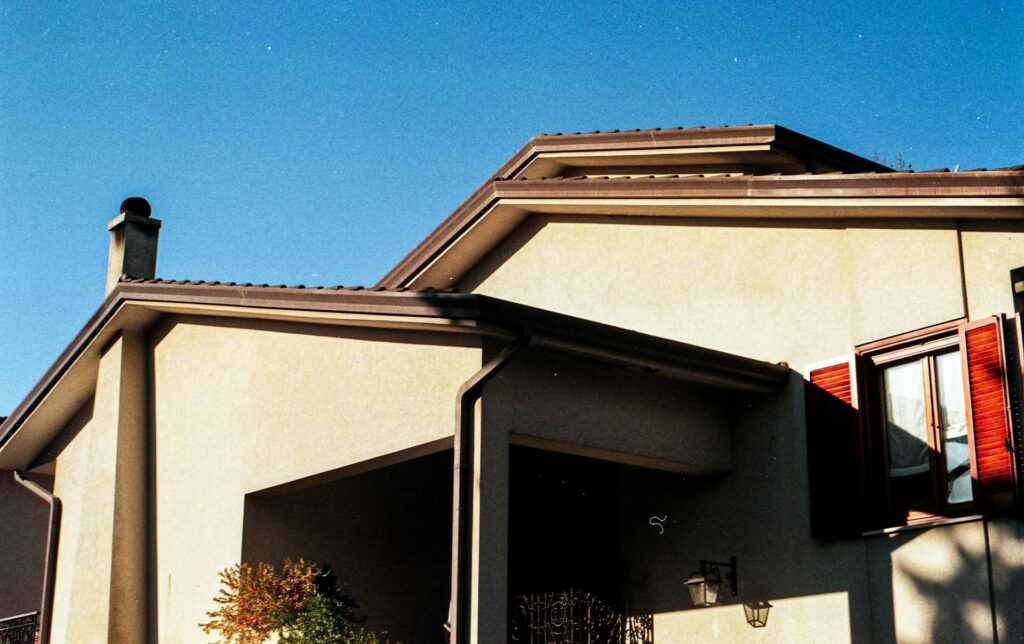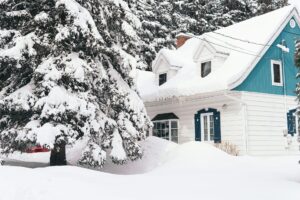Salem’s tree-lined streets become a vibrant tapestry every fall. As the canopy transforms into shades of yellow, orange, and red, the leaves brush rooftops and tumble into gutters. While it’s a sight to behold, this seasonal shift demands proactive home maintenance to avoid clogs, leaks, and more extensive damage. In this guide, we’ll explore comprehensive strategies that help homeowners protect their roofs, gutters, and the overall integrity of their property against the onslaught of leaves.
Understanding effective gutter cleaning, uncovering hidden signs of damage, and planning routine upkeep can preserve a home’s value throughout the year. Below, you’ll find a detailed breakdown of tasks, methods, and recommended schedules that equip you to meet Salem’s leaf-laden demands head-on.
Salem’s Tree Canopy and Your Home
Salem benefits from a rich urban forest, which includes towering Oregon White Oaks, sturdy Maples, and other leafy trees that lend the city its lush aesthetic. This tree diversity enhances the natural environment, offering fresh air and scenic beauty.
Yet with every season, especially in fall, these trees pose a unique challenge as leaves accumulate in gutters and roof valleys. As beautiful as they are, wet leaves can rot quickly, creating blockages that result in gutter overflow and water damage to soffits, siding, and foundations. By acknowledging Salem’s forest abundance, homeowners can anticipate the leaf load that lands on their roofs and gutters each year.
Optimal Gutter Cleaning Schedule
While year-round maintenance is essential, fall is particularly critical for Salem homeowners. Leaves and twigs often accumulate in bursts after late-autumn storms. After the first significant leaf drop, it’s wise to schedule a thorough inspection to clear out early build-up.
Generally, aim for at least two cleanings in autumn. Homes closer to large trees may need more frequent sessions, sometimes monthly, until most leaves have fallen. After winter’s heavy rains, consider scheduling a mid-spring inspection to clear any remaining debris. This schedule ensures that gutters are consistently moving water away from the house.
- Late Fall: Major cleaning to remove the bulk of leaves.
- Early Winter: Follow-up to handle any additional debris.
- Mid-Spring: Check for clogs lingering from winter’s storms.
By adjusting these cleaning windows to your situation, especially based on the density and type of surrounding trees, you can consistently protect your gutters and roof from seasonal damage.
Proper Gutter Cleaning Techniques
A methodical cleaning approach mitigates risk and saves time. Whether you do it yourself or hire professionals, these simple steps provide a solid foundation:
- Collect Your Tools: Gather a sturdy ladder, gutter scoop or trowel, bucket, and garden hose with a high-pressure nozzle, plus work gloves and protective eyewear.
- Start with Dry Debris: Remove large debris first, such as twigs and clumps of leaves, with a scoop. Try to minimize the amount of waste hitting the ground so cleanup is easier.
- Flush with Water: Use a hose to rinse along the gutter channels, clearing finer dirt particles. Watch for slow drainage, which indicates a blockage.
- Check Downspouts: If water backs up, disconnect the bottom of the downspout and flush upward with the hose. This dislodges stubborn clogs and ensures proper flow.
- Inspect for Damage: Look for sagging gutters, misaligned brackets, or cracks that can cause leaks. Document any concerns and address repairs promptly.
Safety Tips for DIY Cleaning
- Always secure the ladder on even ground, and consider using a stabilizer to reduce wobbling.
- Wear rubber-soled shoes and protective gear to minimize slips and unexpected hazards.
- Avoid leaning on the gutters; they can bend under excessive weight.
- If you’re uneasy with heights, consider hiring professional help to ensure a thorough job without risking personal injury.
Learn more about ladder safety guidelines from the American Ladder Institute.
Signs of Gutter Damage to Watch For
Beyond leaves and twigs, certain indicators warn that gutters may be compromised. These early signs allow you to catch issues before they escalate into more significant (and expensive) damages:
- Visible Rust or Corrosion: Persistent moisture can corrode metal gutters and reduce their life span.
- Leaks or Drips: Water gushing from seams or edges signals failing gutter joints.
- Pulling Away from Roofline: If the gutters sag or pull away, it indicates potential water weight or improper bracket support.
- Peeling Paint or Mold Growth: Damp spots along your home’s exterior can signify water overflow from clogged or damaged gutters.
When you spot anything unusual, consider scheduling a professional inspection. Quick action prevents small issues from turning into major repairs.
How Clogged Gutters Damage Your Entire Home
Clogged gutters produce more than messy overflows. Over time, standing water can seep underneath your roof’s shingles, causing the wood deck to decay. Siding becomes vulnerable to water intrusion that leads to mold and mildew. Excess water around your foundation weakens structural integrity and can lead to costly basement flooding.
- Roof Damage: Saturated roof edges can rot decking, undermine shingles, and create leaks.
- Siding and Fascia Board Decay: Trapped water accelerates wood rot, eventually warping fascia boards and trim.
- Foundation Weakness: Pooling water near the foundation may seep into basements or cause cracks in concrete.
- Interior Water Spots: Overflows can funnel water into walls, where stains and mold can grow unseen.
When left alone, these problems have a compounding effect. Roof repairs, siding replacements, and foundation fixes can be far more expensive than routine gutter maintenance. Proactive scheduling can save thousands of dollars in the long run.
Leaf Guards and Gutter Protection Systems
For many Salem homeowners, leaf guards or gutter protection systems prove invaluable. They’re designed to keep out most debris while allowing rainwater to pass freely. The most common types include:
- Mesh Screens: Affordable and straightforward to install. Pair well with standard gutters but may still require occasional washing to remove accumulated dirt.
- Perforated Covers: Tightly fitted pieces covering the top of your gutters. Leaves tend to blow off, though fine debris sometimes enters the small holes.
- Reverse-Curve Systems: Curved hoods guide water into a narrow slit while pushing leaves away. Effective for most leaf sizes but can be pricier.
Each system has a different cost, level of maintenance, and aesthetic. Weigh your home’s particular needs, such as roof shape, typical debris size, and budget, to select the right solution. With a properly installed guard, you’ll reduce the number of cleanings needed and keep your home prepared for those busy fall months.
Roof Valleys and Leaf Accumulation
Roof valleys are the angled intersections where two roof planes meet. They’re designed to funnel rainwater into gutters. However, leaves tend to gather in these crannies before washing down. When left unattended, these clumps trap moisture, accelerating roof wear and tear.
- Trim Overhanging Branches: Leaves fall most heavily along branches that extend over the roof, especially near valleys. Trimming these reduces leaf accumulation and overall roof debris.
- Sweep or Blow Debris: If reachable from a safe vantage point, use a leaf blower or soft broom on dry days to clear buildup off the roof.
- Schedule Inspections: Include roof valleys in your semi-annual maintenance schedule to prevent rot or algae growth.
Keeping valley areas clean helps water flow properly into the gutters and prolongs the life of your roof.
Downspout Maintenance and Drainage
Downspouts play a critical role in directing water away from your foundation. Even if your gutters stay clean, blockages in the downspouts disrupt the entire drainage path. Overflows eventually damage the landscape around your home and can contribute to basement leaks.
Basic Downspout Care
- Remove and Check Elbows: Disconnect the elbow sections to look for leaves or twigs lodged inside.
- Use a Hose Snake: If standard flushing fails, a plumber’s snake can help break up stubborn blockages.
- Verify Underground Drains: Some homeowners have buried drainage systems. Make sure water flows freely so that backups don’t undermine your yard or foundation.
Regular monitoring and cleaning safeguard your property from water-logged disasters. If you notice recurring clogs, consider investing in a gutter protection system or redesigning the runoff path to ensure faster drainage.
Long-Term Solutions for Leaf Management
Keeping gutters clear often involves more than a quick cleanup. For many homeowners, a blend of prevention and strategic landscaping strikes the perfect balance. Here are key tactics for long-term leaf management:
- Gutter Guard Installation: Reduces large debris buildup and lowers cleaning frequency.
- Tree Trimming: Targeting branches that hang directly over the roof cuts down on leaf, twig, and moss accumulation.
- Landscaper Consultations: Assess the healthiest way to trim or remove problem trees while maintaining the canopy’s benefits.
- Regular Professional Service: Many Salem homeowners prefer setting up an annual or semi-annual contract to ensure their gutters and roof receive consistent care.
Pairing these solutions with routine inspections is the surest way to keep your home safe from moisture damage, bolster curb appeal, and maintain property value for the long haul.
Professional vs. DIY Maintenance
A question that often arises is whether to clean gutters independently or hire professionals. Both approaches have merits:
Doing It Yourself
- More Control: You experience firsthand the condition of your gutters and roof.
- Savings: Eliminates labor costs, making it a budget-friendly choice if you’re comfortable with heights.
- Quick Fixes: Minor issues like loose brackets can be handled on the spot.
However, DIY cleaning requires proper ladder safety, climbing confidence, and time. Without caution, accidents can happen, or hidden damages may go unnoticed if you lack experience.
Professional Services
- Efficiency: Trained crews quickly tackle debris, repairs, and minor upgrades in a single visit.
- Expertise: Professionals spot warning signs early, like rusted joints or subtle roof concerns, often saving you from costlier structural damage.
- Convenience: You avoid ladder dangers and gain peace of mind that the job is done right.
Balancing cost and convenience with the security of thorough, risk-free work often motivates Salem homeowners to opt for professional services. This especially applies if your home has a steep or multi-story roof.
Conclusion
Tending to gutters and roofs during Salem’s leaf season safeguards your home against damp, decay, and expensive repairs. The vibrant fall colors may be a hallmark of the city’s landscape, but they can spell trouble when left unchecked.
Staying ahead of leaf buildup is a year-round endeavor, but it doesn’t need to be daunting. By establishing a routine cleaning schedule, spotting the earliest signs of damage, and considering preventive measures like gutter guards, you extend the lifespan of your roof, foundation, and entire property.
Reach out to our team for professional gutter guidance, inspections, and reliable gutter maintenance that keeps your Salem home secure through every season.
Remember, maintaining your gutters and roof isn’t just about warding off annoying clogs. It’s about preserving the comfort, stability, and long-term value that make your home the sanctuary you want it to be. Keep your property protected throughout the year, and you’ll enjoy Salem’s seasonal splendor without worrying about the challenges that falling leaves can bring.




